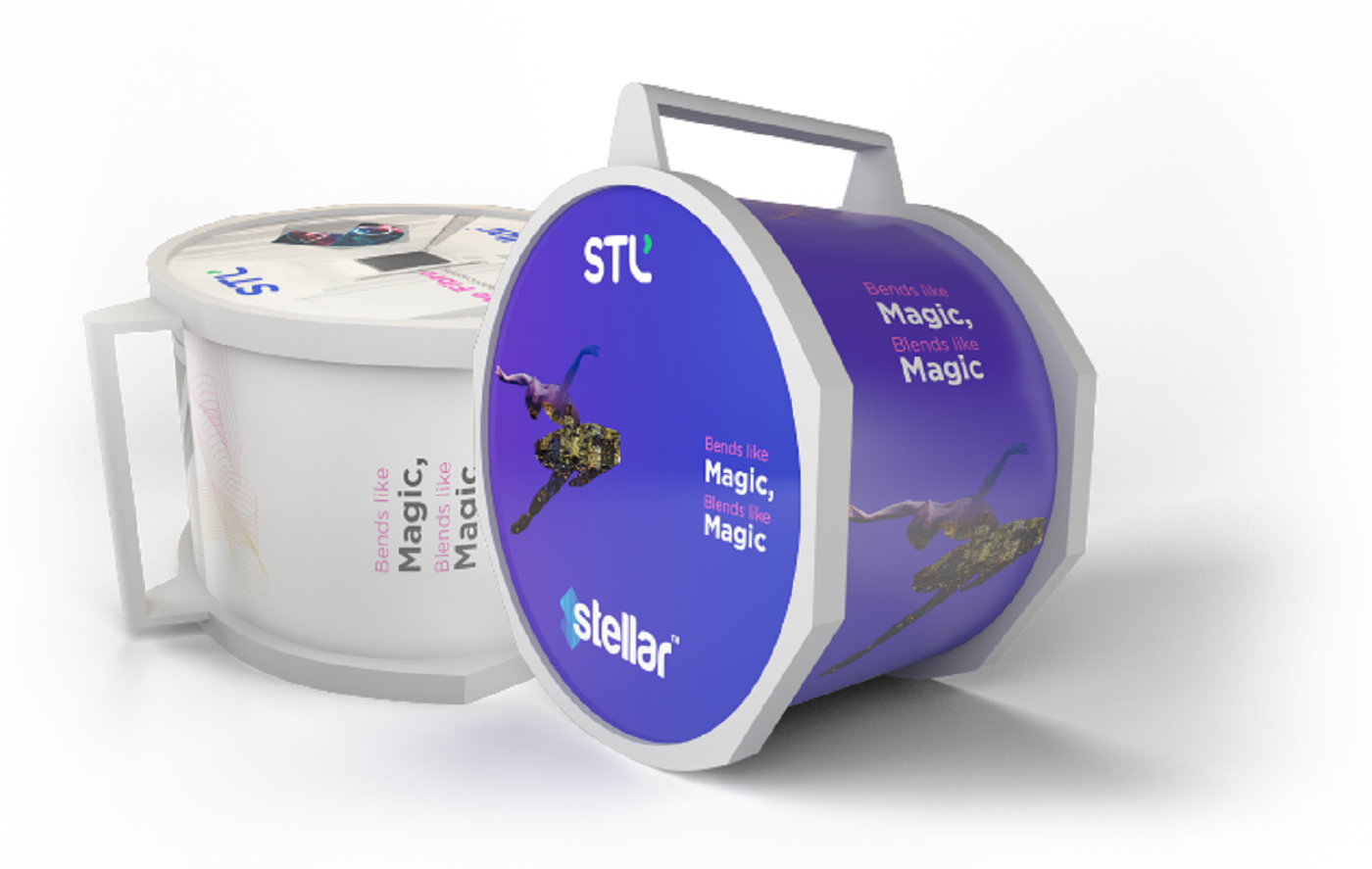
Optical power loss is a significant factor that affects network performance. It can be attributed to various causes that can be either environmental or manmade. Bending is one phenomenon that occurs due to both environment and human elements and can result in reduced network performance. Since the last decade, we have seen a shift of standard transmission fiber from G.652.D to G.657.A1 due to the superior bend performance of the latter. As fiber deployment density increases, the next logical step is to install G.657.A2, the next level in bend insensitive fibers.
Network performance can be improved partially or wholly using A2 fiber if it is fully backward compatible with legacy G.652.D fiber. This blog will discuss the deployment and benefits of highly bend insensitive fibers. Also, you will learn about their role in building future-ready networks. The topics of discussion include,
- A backdrop of bend insensitive fiber standards
- Examples of installing highly bend insensitive fibers in a broader way and their benefits
- Compatibility of A2 bend insensitive fibers with legacy fibers and actives.
Contents
- 1 Tech ecosystem disrupting with new use cases
- 2 Effect of Covid-19 pandemic on data growth
- 3 Increased data demand has pushed network providers for new network creation
- 4 ITU standards for bend optimisation and backward compatibility
- 5 Optical Losses in Network
- 6 Bend insensitive fiber
- 7 Reduced operational expenses due to the use of bend insensitive fiber
- 8 Cables made up of legacy fiber are not ideal for faster network densification
- 9 Bend insensitive fibers enable faster network provisioning
- 10 Bend insensitive fibers offer the below advantages
- 11 Although bend insensitive fibers are excellent, MFD mismatch remains a challenge
- 12 Conclusion
Tech ecosystem disrupting with new use cases
Optical fibers can carry a huge amount of data at very high speeds. As a result, they provide high-speed internet, networking, data centers, and defense applications. In recent years, there has been exponential growth in data as tech ecosystems are brimming with a plethora of new use cases that are both consumer-led and enterprise-led.
Customer-led use cases
- Netflix
- YouTube
- Zoom
Enterprise-led use cases
- IoT
- Data mining
- Robotics
- Artificial Intelligence
- Connectivity
- Cyber Security

Effect of Covid-19 pandemic on data growth
The Covid-19 pandemic has made every business run on its toes due to the lockdown and social distancing measures. Virtual meetings replaced physical meetings, and most people worked from home, especially in the IT and banking sectors. The lockdown has significantly accelerated the data consumption growth like never before. Even after the lockdowns have been lifted in most countries today, the data consumption growth has not stopped and is currently still on the rise. In the new Covid-19 normal, there is a growing requirement for symmetrical bandwidths across wireless and fixed networks.
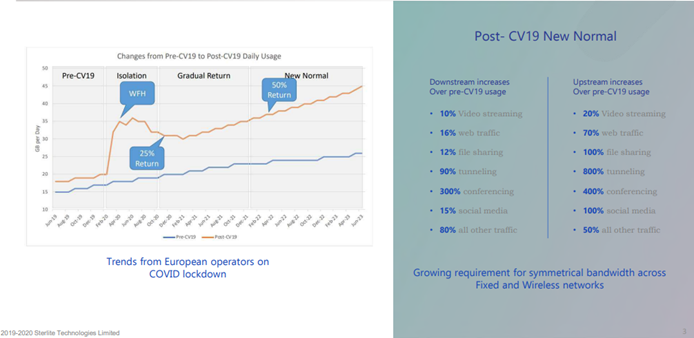
Increased data demand has pushed network providers for new network creation
One of the primary reasons for increased data demand is the increasing number of network devices and connections. The growth rate is 10% CAGR, which is faster than world population growth (1% CAGR) and internet users’ growth (7% CAGR). Also, some of the latest devices and applications consume more data than others. For example, a connected 4K Ultra High Definition (UHD) TV consumes approximately 15-18 MBPS, which is three times more than what plain HD TV consumed a few years ago.
The data demand fire has received fuel from the Covid-19 pandemic. From 2017 to 2022, there is an almost two-x increase in global data demand, with fixed-line internet being a major contributor. To meet the latency and capacity requirements, network service providers have to look for new network creation consisting of converged, denser networks and deep fiberisation.
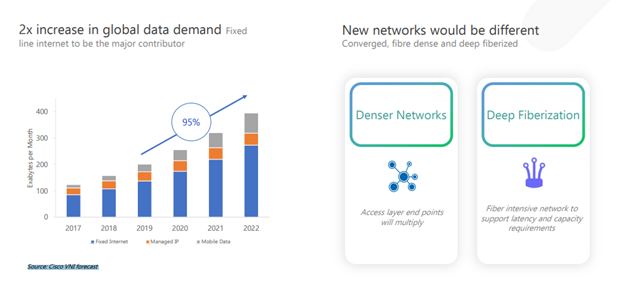
ITU standards for bend optimisation and backward compatibility
The International Telecommunication Union (ITU) describes single-mode fiber standards documents from G.652 through G.655. Many fiber properties are specified on the cable so that it can easily be identified and used. Also, fiber properties change once installed due to environmental conditions. ITU standards sometimes prefer weakening requirements to gain a broader consensus. They should be considered a necessity but not sufficient conditions for an optical fiber to be used in a particular application. ITU standards focus on bend optimisation, but backward compatibility maintenance is an industry imperative. The following diagram shows ITU specifications for various STL optical fibers from OH-LITE to BOW-LITE SUPER. These are categorised based on backward compatibility, bend optimisation, attenuation, and mean MFD (mode field diameter).
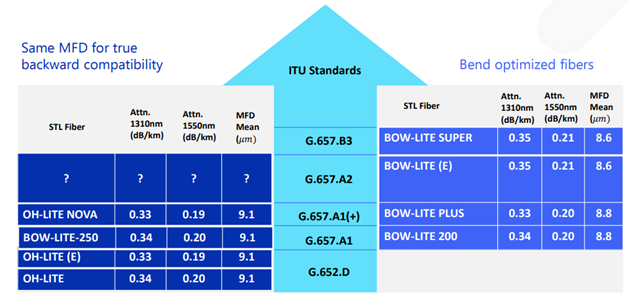
Optical Losses in Network
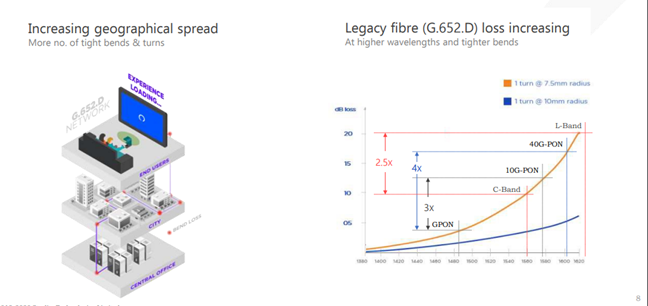
It is widely understood that the severe bending of a live optical fiber will cause optical power loss resulting in reduced network performance. The two ways to identify these losses are Visual Fault Locator (VFL) and OTDR (Optical Time Domain Reflectometer) in “real-time” mode. The two main types of bending losses are micro bending and macro bending. The micro bending losses occur in optic fibers when pressure is applied to their surfaces. Macro bending is more visible and occurs when optical fibers are physically bent when a critical angle is exceeded. Due to the geographical spread, there are many tighter bends and turns, resulting in severe macro bending losses, especially with legacy fiber at higher wavelengths and tighter bends.
Macro bend loss is especially prevalent in passive ancillaries’ long-distance routes. For example, there is a 1.06 dB average macro bend loss per macro bend point @1625nm with legacy fiber G.652.D.
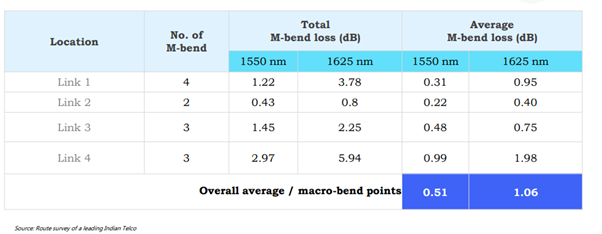
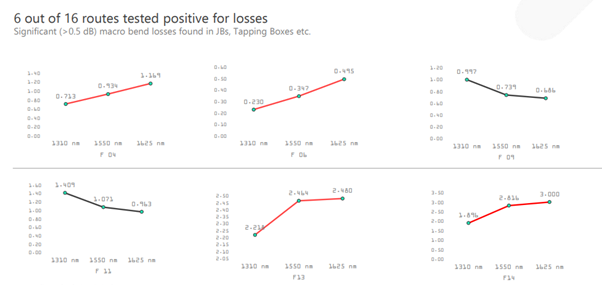
Many factors across a network span leads to more macro bend losses at feeder network, distribution network, and last mile to inside building. Some of them include,
- Feeder
Network
- Joint splicing
- Fiber attenuation
- Fiber cuts
- Connector loss
- Accidental bends
- Distribution
Network
- Splitter loss
- Connector loss
- Splice loss
- Accidental bend
- Last mile to inside the building
- HTB connector loss
- Bend loss
- Staple loss
- Accidental bend during O and M

With one accidental bend, the data transmission is interrupted with legacy fibers.
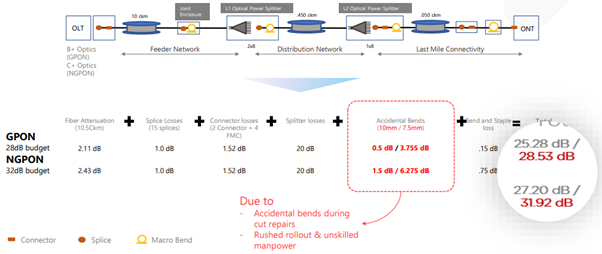
Bend insensitive fiber
A high-quality bend insensitive fiber will significantly solve the above macro bending losses.

Reduced operational expenses due to the use of bend insensitive fiber
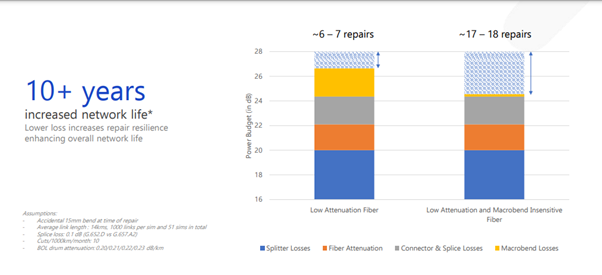
Cables made up of legacy fiber are not ideal for faster network densification
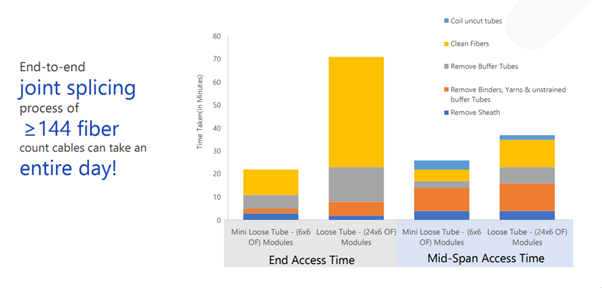
Bend insensitive fibers enable faster network provisioning

Bend insensitive fibers offer the below advantages

Although bend insensitive fibers are excellent, MFD mismatch remains a challenge


Conclusion
There is a one-stop solution with multiple benefits to solve most optical fiber loss issues mentioned above. STL has brought a perfect bend insensitive fiber called Stellar, with best-in-class attenuation and bend insensitivity. It has up to 10 times fewer bend losses than OH-LITE NOVA. Overall, Stellar is the latest bend loss killer!



